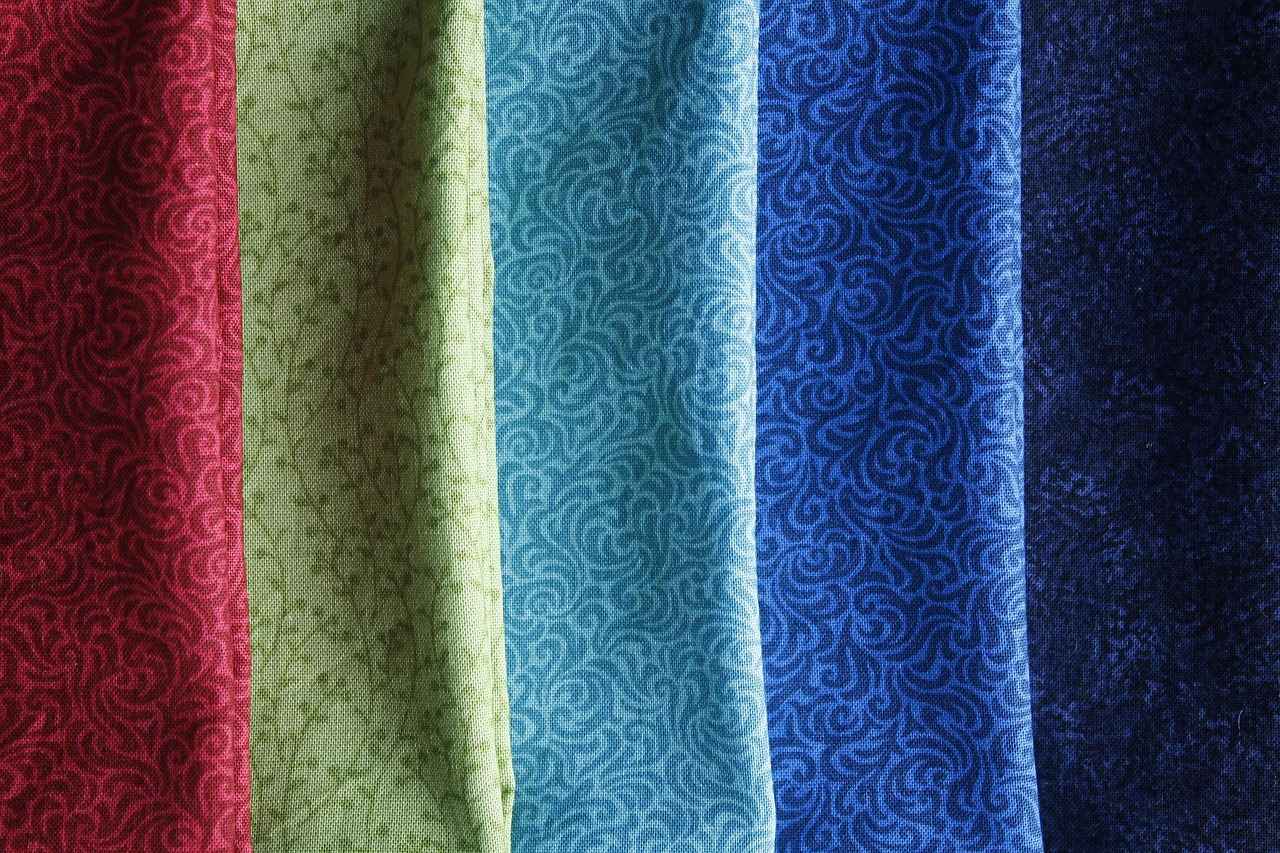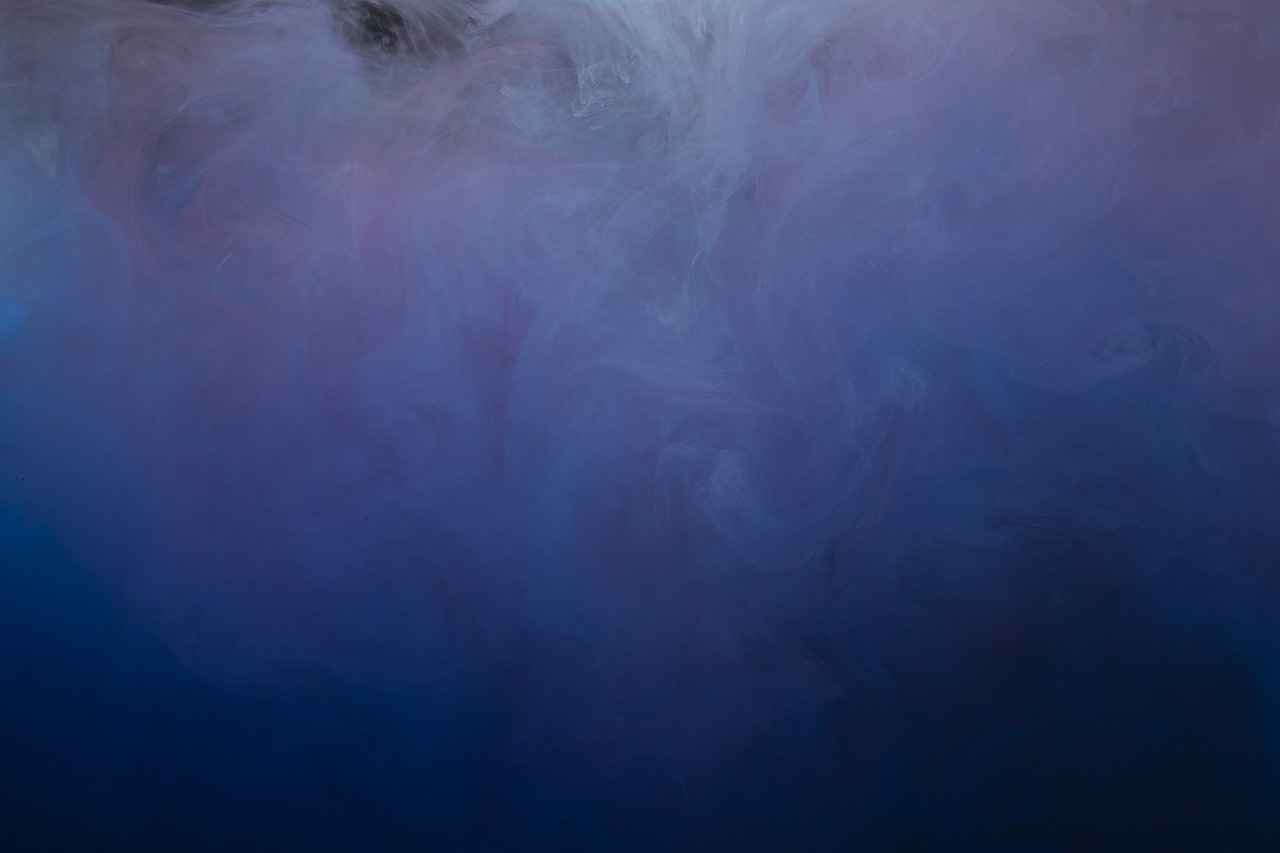This comprehensive guide provides effective techniques for removing various stains from night dresses, ensuring your favorite garments remain pristine and wearable for years to come.
Understanding common stains such as wine, oil, and ink can help you quickly identify the best removal techniques and prevent permanent damage to your night dresses. Each type of stain requires a tailored approach for effective treatment.
Wine stains can be particularly tricky, but using the right method can help you effectively eliminate them without damaging the fabric of your night dress.
- Blot the Stain: Use a clean cloth to gently blot the stain, absorbing as much wine as possible.
- Avoid Rubbing: Rubbing can spread the stain further, making it more difficult to remove.
Simple household items like salt or baking soda can work wonders in lifting wine stains from fabric. For instance, sprinkling salt on the stain can absorb the wine, while baking soda can help neutralize odors.
Oil stains can be stubborn, but understanding the chemistry behind oil and fabric can help you choose the right products for effective removal.
Dish soap is a powerful tool against oil stains due to its grease-cutting properties. Apply a small amount directly to the stain, let it sit for a few minutes, and then rinse with warm water.
In some cases, professional cleaning may be the safest option for delicate fabrics. If the stain persists after your attempts, consulting a professional can save your night dresses from irreversible damage.
Ink stains can be daunting, but with the right techniques, you can restore your night dress to its original condition without much hassle.
Different types of ink require different solvents. For water-based inks, rubbing alcohol can be effective, while oil-based inks may need a specialized ink remover.
Understanding the difference between blotting and rubbing can help you avoid spreading the stain and damaging the fabric further. Always opt for blotting to minimize damage.
Blood stains can be particularly challenging, especially if they have dried. However, with prompt action and the right techniques, you can often remove them successfully.
Using cold water is generally recommended for blood stains, as hot water can set the stain. Rinse the fabric under cold water as soon as possible for the best results.
Hydrogen peroxide can be a powerful ally in removing stubborn blood stains. Apply it directly to the stain, let it sit for a few minutes, and then rinse thoroughly.
Preventing stains is often easier than removing them. Implementing a few best practices can help keep your night dresses looking new for longer.
Certain fabrics are more stain-resistant than others. Opting for materials like polyester can help you avoid common staining issues altogether.
Regular washing and proper storage can significantly reduce the likelihood of stains. Store your night dresses in a cool, dry place and wash them according to the care label instructions.
Some stains may require professional assistance for effective removal. Understanding when to consult a professional can save your night dresses from irreversible damage.
Certain fabrics, like silk or lace, may require specialized cleaning techniques. Knowing how to identify these fabrics can help you make informed decisions.
While DIY methods can be effective, they also come with risks. Learn about the potential pitfalls of at-home stain removal techniques to avoid costly mistakes.

What Are Common Stains on Night Dresses?
When it comes to caring for your night dresses, understanding common stains is essential. Night dresses, often made from delicate fabrics, can easily fall victim to various stains that, if not addressed promptly, may become permanent. By identifying the most frequent culprits, such as wine, oil, and ink, you can implement effective removal techniques and maintain the beauty of your garments.
Night dresses can encounter a variety of stains, each requiring specific treatment methods. Below are some of the most common stains:
- Wine Stains: Red or white wine spills can leave unsightly marks on your favorite night dress.
- Oil Stains: Whether from cooking oil or cosmetic products, oil stains can be particularly stubborn.
- Ink Stains: Ink from pens or markers can create dark smudges that are challenging to remove.
- Blood Stains: Accidental cuts or scrapes can lead to blood stains, which require immediate attention.
- Food Stains: Spills from meals or snacks can leave greasy or colorful marks on fabric.
Understanding these stains is the first step in effective removal. Each type of stain interacts differently with fabric, and knowing how to treat them can prevent irreversible damage.
Identifying the type of stain you are dealing with is crucial for choosing the right treatment method. Here are some tips:
- Wine: For wine stains, it is important to act quickly. Blot the stain gently with a clean cloth to absorb excess liquid.
- Oil: Oil stains require a grease-cutting agent. Dish soap is highly effective in breaking down the oil molecules.
- Ink: Different inks may require different solvents. Rubbing alcohol is often effective for many types of ink stains.
- Blood: Use cold water to rinse out blood stains, as hot water can set the stain.
Acting swiftly can significantly increase your chances of successfully removing stains. The longer a stain sits, the more it can set into the fabric, making it harder to remove. Here are some steps to take immediately:
- Blot, don’t rub: Rubbing can spread the stain and damage the fabric.
- Use cold water: For most stains, cold water is preferable as it helps prevent setting.
- Test cleaning solutions: Before applying any cleaning solution, test it on a hidden area to check for fabric damage.
Preventing stains is always easier than removing them. Here are some best practices to keep your night dresses looking pristine:
- Choose Stain-Resistant Fabrics: Opt for fabrics that are less prone to staining, such as polyester blends.
- Store Properly: Keep night dresses in a clean, dry place to avoid accidental spills and stains.
- Regular Maintenance: Regularly wash and care for your night dresses to keep them in top condition.
By understanding the common stains that can affect your night dresses and implementing effective treatment and prevention strategies, you can prolong the life of your favorite garments. Always remember, a little knowledge and quick action can save your night dresses from unsightly stains.

How to Remove Wine Stains from Night Dresses?
Wine stains can be particularly tricky, but using the right method can help you effectively eliminate them without damaging the fabric of your night dress. This section provides you with essential techniques and tips to tackle wine stains, ensuring your favorite garments remain in pristine condition.
When faced with a wine stain, acting quickly is crucial. The sooner you can address the stain, the better your chances are of removing it completely. Here are some immediate actions to consider:
- Blot the Stain: Use a clean cloth or paper towel to gently blot the stain. Avoid rubbing, as this can push the wine deeper into the fabric.
- Avoid Heat: Do not use hot water or heat sources, as these can set the stain, making it more difficult to remove.
- Use Salt: If you have table salt on hand, sprinkle it over the stain immediately. Salt can help absorb the wine.
There are several effective home remedies that can help lift wine stains from your night dress:
- Baking Soda Paste: Mix baking soda with water to create a paste. Apply it to the stain and let it sit for about 30 minutes before rinsing.
- White Vinegar and Dish Soap: Combine one cup of white vinegar with one cup of dish soap. Apply this mixture to the stain, letting it sit for a few minutes before blotting with a clean cloth.
- Club Soda: Pour club soda directly onto the stain. The carbonation can help lift the wine from the fabric.
If home remedies do not yield the desired results, it may be time to consider professional cleaning. Professional cleaners have specialized techniques and products that can safely remove tough stains without damaging delicate fabrics. Here are some tips for choosing a professional cleaner:
- Research Local Cleaners: Look for cleaners that specialize in delicate fabrics or stain removal.
- Check Reviews: Read customer reviews to gauge the effectiveness and reliability of the service.
- Ask About Techniques: Inquire about the methods they use to ensure they align with your fabric care needs.
To avoid wine stains in the future, consider implementing some preventive measures:
- Choose Stain-Resistant Fabrics: When selecting night dresses, look for fabrics that are less prone to staining.
- Be Mindful During Events: If you plan to enjoy wine, consider wearing an apron or a darker outfit that can hide potential stains.
- Regular Maintenance: Regularly washing your night dresses can help keep them fresh and reduce the likelihood of stains setting in.
By following these guidelines, you can effectively manage and remove wine stains from your night dresses, ensuring they remain beautiful and wearable for years to come.
Immediate Actions to Take
When it comes to wine stains on your beloved night dresses, acting swiftly is essential. The sooner you respond, the higher your chances of successfully eliminating the stain without causing damage to the fabric. Here are the immediate actions you should take:
Wine stains can be particularly challenging due to their pigment-rich composition. If left untreated, these stains can set into the fabric, making removal significantly more difficult. By responding quickly, you minimize the risk of permanent discoloration and maintain the integrity of your garment.
One of the most critical steps in stain removal is to blot the affected area gently. Use a clean, dry cloth or paper towel to dab the stain. This action helps absorb excess wine without pushing it deeper into the fibers. Remember:
- Blotting absorbs the liquid.
- Rubbing can spread the stain and damage the fabric.
After blotting, it’s advisable to rinse the stained area with cold water. This helps to dilute the wine and flush out some of the pigments. Hold the fabric under running water, allowing the water to flow through the back of the stain to push it out rather than spreading it further.
For an effective home remedy, sprinkle a generous amount of salt or baking soda on the stain. Both substances work by absorbing moisture and drawing out the wine pigments. Allow the salt or baking soda to sit for about 5-10 minutes before gently brushing it off. This step can significantly lighten the stain.
If the stain persists after your initial efforts, consider applying a stain remover specifically designed for wine stains. Look for products containing enzymes that break down the organic compounds in the wine. Follow the manufacturer’s instructions for the best results.
After pre-treating the stain, wash your night dress according to the care label instructions. Use the appropriate water temperature and laundry detergent suitable for the fabric type. Avoid using hot water, as it can set the stain further into the fibers.
- Do not use hot water until you are sure the stain is gone.
- Avoid using bleach, as it can damage the fabric and discolor it.
- Do not dry the garment in a dryer until the stain is completely removed, as heat can set the stain permanently.
By taking these immediate actions, you can significantly improve your chances of successfully removing wine stains from your night dresses. Remember, the key is to act quickly and follow the right steps to preserve your favorite garments.
Effective Home Remedies for Wine Stains
Wine stains can be a nightmare, especially when they land on your favorite night dress. However, with the right approach and some effective home remedies, you can tackle these stains head-on. In this section, we will explore various household items that can help you lift wine stains from fabric, ensuring your garments remain pristine.
Many common household items possess stain-fighting properties that can be incredibly effective against wine stains. Here are a few of the most popular options:
- Salt: This kitchen staple is not just for seasoning food; it can absorb liquid and help lift stains.
- Baking Soda: Known for its deodorizing properties, baking soda can also work wonders on stains when mixed with water to form a paste.
- White Vinegar: This versatile ingredient can help break down the pigments in wine, making it easier to remove.
- Club Soda: The carbonation in club soda can help lift the stain from fabric fibers.
Using these household items correctly is crucial for effective stain removal. Here’s a step-by-step guide:
- Blot the Stain: As soon as you notice the wine spill, gently blot the area with a clean cloth or paper towel to absorb as much liquid as possible. Avoid rubbing, as this can spread the stain.
- Apply Salt: If you have salt on hand, sprinkle it generously over the stain. The salt will absorb the wine and can be brushed off after a few minutes.
- Create a Baking Soda Paste: Mix baking soda with a small amount of water to create a paste. Apply it to the stain and let it sit for about 30 minutes before rinsing.
- Use White Vinegar: Pour a small amount of white vinegar directly on the stain. Let it sit for a few minutes, then blot with a clean cloth.
- Club Soda Rinse: After applying any of the above remedies, rinse the area with club soda. The carbonation can help lift any remaining residue.
Here are some additional tips to enhance your stain removal efforts:
- Act Quickly: The sooner you address the stain, the better your chances of removing it.
- Test First: Always test your chosen remedy on a small, inconspicuous area of the fabric to ensure it doesn’t cause damage.
- Repeat if Necessary: Sometimes, a second application may be required for stubborn stains.
By utilizing these effective home remedies and following the right techniques, you can successfully remove wine stains from your night dresses and keep them looking their best. Remember, patience and prompt action are key!

What About Oil Stains on Night Dresses?
Oil stains can be particularly challenging to remove from night dresses, but understanding the chemistry behind oil and fabric can empower you to choose the right products and techniques for effective removal. Oil, being hydrophobic, does not mix with water, making it tricky to eliminate with standard cleaning methods. However, with the right approach, you can restore your favorite garments to their original condition.
Oil stains are stubborn due to their chemical composition. Unlike water-based stains, oil creates a film that can adhere tightly to fabric fibers. This makes it essential to use products that can break down the oil molecules effectively. Understanding this property can help you select the right cleaning agents.
There are several methods to tackle oil stains on night dresses. Here are some effective techniques:
- Blotting the Stain: Always start by blotting the stain with a clean cloth to absorb excess oil. Avoid rubbing, as this can spread the stain further.
- Using Dish Soap: Dish soaps are formulated to cut through grease. Apply a small amount directly to the stain, gently rub it in, and let it sit for 5-10 minutes before rinsing.
- Baby Powder or Cornstarch: If the stain is fresh, sprinkle baby powder or cornstarch on it. These powders can absorb the oil. Allow it to sit for at least 15 minutes before brushing it off and treating it with soap.
- Commercial Stain Removers: There are many stain removers specifically designed for grease and oil. Look for products that contain enzymes or surfactants that can effectively break down oil.
In some instances, especially with delicate fabrics like silk or chiffon, it may be best to consult a professional cleaner. Here are some indicators:
- Delicate Fabrics: If your night dress is made of delicate materials, professional cleaning can prevent damage.
- Persistent Stains: If home remedies do not work, a professional cleaner may have access to stronger, safe solvents.
- Valuable Items: If the garment is particularly valuable or sentimental, it’s worth investing in expert care.
Prevention is always better than cure. Here are some tips to help avoid oil stains:
- Careful Eating: Be cautious while eating or drinking near your night dress. Use napkins and avoid leaning over food.
- Regular Maintenance: Regular washing can help prevent stains from setting in. Follow the care label instructions for the best results.
- Storage Practices: Store your night dresses in a clean, dry place to avoid accidental oil exposure.
By understanding the nature of oil stains and employing the right techniques, you can keep your night dresses looking their best. Whether you opt for home remedies or professional cleaning, taking prompt action is key to successful stain removal.
Using Dish Soap for Oil Stains
When it comes to tackling oil stains on night dresses, dish soap emerges as a remarkably effective solution. Its unique grease-cutting properties make it a go-to choice for removing stubborn oil marks from delicate fabrics. Understanding how to apply dish soap correctly can enhance your stain removal efforts and keep your favorite garments looking pristine.
Dish soap is designed specifically to break down grease and oil, making it a powerful ally in your stain-fighting arsenal. Unlike some harsh chemicals, most dish soaps are gentle enough for fabrics, ensuring that your night dresses remain safe from damage. Additionally, they are readily available in most households, making them a convenient option for quick stain treatment.
To effectively remove oil stains from your night dresses using dish soap, follow these simple steps:
- Act Quickly: The sooner you treat the stain, the better your chances of complete removal.
- Blot, Don’t Rub: Use a clean cloth to gently blot the stain, absorbing as much oil as possible without spreading it further.
- Mix the Solution: Combine a few drops of dish soap with warm water in a bowl or basin.
- Apply the Solution: Dip a clean cloth or sponge into the soapy water and gently apply it to the stained area. Avoid using too much pressure, as this can damage the fabric.
- Rinse Thoroughly: After allowing the soap to sit for a few minutes, rinse the area with cold water to remove any soap residue.
- Air Dry: Allow the fabric to air dry completely before checking if the stain is gone. Avoid using heat, as it can set the stain.
For the best results, consider the following tips:
- Test on a Hidden Area: Before applying dish soap, test it on a small, inconspicuous area of the fabric to ensure it doesn’t cause discoloration.
- Use Cold Water: Always rinse with cold water, as hot water can set the oil stain, making it more difficult to remove.
- Repeat if Necessary: Stubborn stains may require multiple applications of the dish soap solution. Be patient and persistent.
While dish soap is effective for most oil stains, there are instances where professional cleaning may be necessary. If the stain persists after multiple attempts or if the fabric is particularly delicate, consulting a professional cleaner can help prevent damage and ensure the best results.
In conclusion, using dish soap for oil stains on night dresses is a practical and effective approach. By following the steps outlined above and taking the necessary precautions, you can maintain the beauty and longevity of your cherished garments.
When to Seek Professional Cleaning
When it comes to maintaining the beauty and integrity of your night dresses, professional cleaning can sometimes be the best route, especially for delicate fabrics. Knowing when to take this important step can prevent irreversible damage and ensure that your cherished garments remain in top condition.
Delicate fabrics such as silk, chiffon, or lace require specialized attention that typical home cleaning methods may not provide. Here are some key reasons to consider professional cleaning:
- Expert Knowledge: Professional cleaners are trained to handle various fabric types and know the right techniques to avoid damage.
- Advanced Equipment: They use industrial-grade cleaning solutions and equipment that can effectively remove tough stains without harming the fabric.
- Time-Saving: Instead of spending hours trying to remove a stubborn stain, you can leave it to the experts and focus on other tasks.
Not every stain or issue requires a trip to the dry cleaners, but there are specific situations where professional cleaning is advisable:
- Severe Stains: If you have a stain that refuses to budge after multiple attempts with home remedies, it may be time to seek professional assistance.
- Delicate Fabrics: Fabrics like silk or those with intricate designs often require special care that only professionals can provide.
- Preserving Quality: For valuable or vintage pieces, professional cleaning can help maintain their quality and extend their lifespan.
While many people opt for DIY methods to save money, these approaches can sometimes lead to more harm than good. Here are some risks associated with at-home stain removal:
- Fabric Damage: Incorrect cleaning methods can weaken the fibers, leading to tears or other irreversible damage.
- Stain Setting: Using the wrong temperature water or cleaning agents can set stains instead of removing them, making them even harder to eliminate.
- Color Bleeding: Some fabrics may bleed color when treated with certain solutions, resulting in unsightly marks or discoloration.
If you decide that professional cleaning is the best option, here are some tips for selecting the right service:
- Research: Look for cleaners with good reviews and a reputation for handling delicate fabrics.
- Ask Questions: Don’t hesitate to inquire about their cleaning methods, especially regarding the specific fabric of your night dress.
- Request a Quote: Get an estimate before proceeding to avoid unexpected costs.
In conclusion, understanding when to seek professional cleaning can save your night dresses from irreversible damage. By recognizing the signs that indicate the need for expert help, you can ensure that your delicate fabrics remain beautiful and wearable for years to come.

How to Tackle Ink Stains on Night Dresses?
Ink stains can be particularly challenging due to their tendency to spread and set quickly. However, with the right techniques and knowledge, you can effectively remove these stains from your night dresses and restore them to their original beauty. This guide will help you understand how to tackle ink stains, ensuring your favorite garments remain wearable and pristine.
Ink stains can come from various sources, including pens, markers, and printers. Each type of ink may require different approaches for effective removal. Understanding the type of ink can help you choose the right treatment method.
Different inks require different solvents for removal. Here are some common solvents and their effectiveness:
- Isopropyl Alcohol: Excellent for removing ballpoint pen ink.
- Acetone: Works well on permanent markers but can damage delicate fabrics.
- Vinegar and Cornstarch Paste: A gentle option for sensitive materials.
It’s essential to test any solvent on a hidden area of the fabric first to avoid damage.
When dealing with ink stains, blotting is always the preferred method. Blotting involves gently pressing a clean cloth or paper towel onto the stain to absorb the ink. Rubbing, on the other hand, can spread the ink further and damage the fabric. Here’s a step-by-step approach:
- Place a paper towel under the stained area to absorb excess ink.
- Apply your chosen solvent to a clean cloth.
- Gently blot the stain, working from the outside in.
- Repeat until the stain lifts.
After successfully treating the ink stain, washing your night dress properly is crucial to ensure all remnants of the ink and solvent are removed. Follow these tips:
- Use cold water, as hot water can set any remaining ink.
- Choose a gentle detergent suitable for the fabric type.
- Air dry your garment to prevent any heat from setting residual stains.
If the ink stain persists despite your best efforts, it may be time to consult a professional cleaner. They have specialized techniques and products that can safely remove stubborn stains, especially from delicate fabrics. Always inform them about the type of ink and any treatments you have already attempted.
By following these guidelines, you can tackle ink stains on your night dresses effectively. Remember, prompt action and the right techniques are key to preserving your garments and keeping them looking their best.
Choosing the Right Solvent for Ink Stains
When it comes to removing ink stains from night dresses, understanding the importance of the right solvent is crucial. Ink can be composed of various substances, and each type requires a specific solvent for effective removal. Using the incorrect solvent can not only fail to remove the stain but can also risk damaging the delicate fabric of your night dress.
Ink can be categorized into several types, including:
- Ballpoint Ink: Oil-based and often more challenging to remove.
- Gel Ink: Water-based and tends to be easier to treat.
- Permanent Marker Ink: Extremely stubborn, requiring specialized solvents.
- Printer Ink: Typically water-soluble but can vary based on the printer type.
Each ink type has a unique chemical composition that interacts differently with solvents. For example, oil-based inks, like those found in ballpoint pens, require solvents that can dissolve oils, whereas water-based inks can often be treated with water or mild detergents. Understanding these differences can significantly enhance your chances of successful stain removal.
Here’s a breakdown of effective solvents for various ink types:
| Ink Type | Recommended Solvent | Application Method |
|---|---|---|
| Ballpoint Ink | Rubbing alcohol or hand sanitizer | Apply with a cotton ball and blot gently |
| Gel Ink | Dish soap mixed with water | Soak the area and gently scrub |
| Permanent Marker Ink | Acetone or nail polish remover | Use sparingly with a cotton swab |
| Printer Ink | White vinegar or rubbing alcohol | Blot with a cloth soaked in the solution |
Before applying any solvent to your night dress, it’s vital to conduct a patch test. Choose an inconspicuous area of the fabric and apply a small amount of the solvent. Wait for a few minutes to see if there’s any discoloration or damage. This step is crucial to ensure that your solvent choice won’t harm the fabric.
Follow these steps to effectively remove ink stains:
- Act Quickly: The sooner you treat the stain, the better your chances of removal.
- Blot, Don’t Rub: Use a clean cloth to blot the stain gently. Rubbing can spread the ink further.
- Apply the Solvent: Use the appropriate solvent based on the ink type, and apply it using a cotton ball or cloth.
- Rinse Thoroughly: After treating the stain, rinse the area with cold water to remove any solvent residue.
- Wash as Usual: Finally, wash your night dress according to the care label instructions.
By understanding the different types of ink and the solvents that work best for each, you can effectively tackle ink stains on your night dresses. Remember, the key is to act quickly and use the right products to preserve the integrity of your beloved garments.
Blotting vs. Rubbing: Which is Better?
When it comes to removing stains from your cherished night dresses, understanding the techniques of blotting and rubbing is crucial. These methods can significantly influence the outcome of your cleaning efforts, and knowing when to use each can help preserve the integrity of the fabric.
Blotting is a gentle technique used to absorb excess liquid from a stain without pushing it deeper into the fabric. To effectively blot a stain:
- Start by using a clean, dry cloth or paper towel.
- Gently press the cloth against the stain, allowing it to soak up the liquid.
- Avoid scrubbing or rubbing the area, as this can spread the stain and damage the fibers.
This method is particularly effective for liquid stains, such as wine or juice, where the goal is to lift the stain rather than smear it.
Rubbing, on the other hand, involves scrubbing the fabric to remove the stain. While this may seem like a quick solution, it often leads to adverse effects:
- Rubbing can cause the stain to penetrate further into the fibers, making it more challenging to remove.
- It can damage delicate fabrics, leading to fraying or pilling.
- Rubbing may also alter the texture or appearance of the fabric, making it look worn.
Thus, while it may seem tempting to rub a stain away, this method should be used with caution and only when absolutely necessary.
Understanding the difference between these two techniques can help you avoid common pitfalls in stain removal. Here are a few reasons why blotting is generally preferred:
- Prevents Stain Spread: Blotting minimizes the risk of spreading the stain, allowing for more effective removal.
- Preserves Fabric Integrity: By avoiding harsh scrubbing, you help maintain the fabric’s texture and appearance.
- Enhances Stain Removal: Blotting allows for better absorption of cleaning solutions, increasing the chances of complete stain removal.
There are situations where rubbing may be necessary, especially with stubborn stains that have set in. In such cases, it’s essential to:
- Use a gentle touch, applying minimal pressure.
- Work from the outside of the stain towards the center to prevent it from spreading.
- Utilize appropriate cleaning solutions that can help break down the stain without harming the fabric.
In summary, knowing when to blot and when to rub is key to effective stain removal. For most stains, especially on delicate fabrics like those found in night dresses, blotting is the safer and more effective option. By following these guidelines, you can protect your garments and keep them looking their best for years to come.

Can You Remove Blood Stains from Night Dresses?
Blood stains can be a source of frustration, especially when they occur on your favorite night dresses. The good news is that with prompt action and the right techniques, you can often remove them successfully. This section will guide you through effective methods to tackle blood stains, ensuring your garments remain in excellent condition.
Blood stains are protein-based, which means they require specific treatment to prevent them from setting into the fabric. The key to successful removal lies in acting quickly and using the appropriate techniques.
- Blot, Don’t Rub: As soon as you notice a blood stain, use a clean cloth or paper towel to gently blot the area. Rubbing can spread the stain and push it deeper into the fibers.
- Cold Water is Your Friend: Rinse the stained area with cold water as soon as possible. Hot water can cause the proteins in the blood to coagulate, making the stain more difficult to remove.
Removing dried blood stains can be more challenging, but it is not impossible. Here are some effective methods:
- Soak in Cold Water: Submerge the stained area in cold water for at least 30 minutes. This helps to loosen the dried blood.
- Use Soap or Detergent: After soaking, apply a small amount of liquid laundry detergent or a bar soap directly to the stain. Gently work it into the fabric with your fingers.
- Hydrogen Peroxide: For stubborn stains, hydrogen peroxide can be effective. Apply a small amount to the stain, let it sit for a few minutes, and then rinse with cold water. Always test on a hidden area first to ensure it doesn’t damage the fabric.
If the stain persists after your attempts to remove it, or if your night dress is made from delicate fabric like silk or lace, it may be best to consult a professional cleaner. They have specialized techniques and products that can effectively treat stains without causing damage to your garment.
To avoid the hassle of removing blood stains in the future, consider these preventive measures:
- Keep First Aid Supplies Handy: Having band-aids and antiseptic on hand can help you manage minor injuries before they result in stains.
- Choose Stain-Resistant Fabrics: When shopping for night dresses, look for fabrics that are treated to resist stains.
By understanding how to effectively remove blood stains and taking preventive measures, you can keep your night dresses looking their best for years to come. Remember, the sooner you act, the better your chances of successful stain removal.
Cold Water vs. Hot Water: What Works Best?
When it comes to removing blood stains from night dresses, the temperature of the water you use can significantly impact the effectiveness of your cleaning efforts. Many people may wonder, “Is cold water really better than hot water for blood stains?” The answer is a resounding yes, and understanding why can help you preserve your favorite garments.
Blood stains are primarily composed of proteins that can become set in fabric when exposed to heat. Using hot water can cause these proteins to bond with the fibers of your night dress, making the stain much harder, if not impossible, to remove. Cold water, on the other hand, helps to keep the proteins in a more soluble state, allowing for easier removal.
- Act Quickly: The sooner you can treat a blood stain, the better. Rinse the stained area under cold running water as soon as possible.
- Blot, Don’t Rub: Use a clean cloth or paper towel to blot the stain gently. Rubbing can spread the stain and damage the fabric.
- Soak if Necessary: If the stain is stubborn, soak the garment in cold water for 30 minutes before proceeding with further treatment.
If cold water alone doesn’t do the trick, consider using a gentle detergent or a stain remover designed for protein-based stains. Apply the product to the stain and let it sit for a few minutes before rinsing with cold water again.
For particularly stubborn blood stains, hydrogen peroxide can be an effective solution. It acts as a mild bleach and can help break down the stain. However, it’s essential to test it on a hidden area of the fabric first to ensure it doesn’t cause discoloration.
- Using Hot Water: As mentioned, hot water can set the stain. Always stick to cold water.
- Neglecting to Blot: Rubbing can worsen the stain. Always blot gently.
- Ignoring Fabric Care Labels: Different fabrics require different care. Always check the label before applying any cleaning method.
In summary, using cold water is the best practice for treating blood stains on night dresses. By acting quickly and using the right techniques, you can effectively remove stains without damaging your favorite garments. Remember, the key is to remain calm and follow these steps to ensure your night dresses stay looking their best for years to come.
Using Hydrogen Peroxide for Stubborn Blood Stains
When it comes to tackling stubborn blood stains on night dresses, hydrogen peroxide emerges as a powerful and effective solution. Its ability to break down organic compounds makes it an ideal choice for removing blood stains, but using it safely and effectively is crucial to avoid damaging delicate fabrics.
Hydrogen peroxide is not only a common household disinfectant but also a potent stain remover. It works by releasing oxygen when applied to stains, which helps to lift the stain from the fabric. This property makes it particularly effective against protein-based stains like blood.
Before applying hydrogen peroxide to your night dress, it is essential to conduct a patch test. Here’s how:
- Choose a hidden area of the fabric.
- Apply a small amount of hydrogen peroxide.
- Wait for 5-10 minutes to see if any discoloration occurs.
If there is no adverse reaction, you can proceed to treat the stain.
Follow these steps for effective blood stain removal:
- Act Quickly: The sooner you treat the stain, the better your chances of complete removal.
- Blot, Don’t Rub: Use a clean cloth to blot the stain gently. Rubbing can spread the stain further.
- Apply Hydrogen Peroxide: Pour a small amount of hydrogen peroxide directly onto the stain. Let it fizz for a few minutes.
- Blot Again: After the fizzing stops, use a clean cloth to blot the area, absorbing the stain.
- Rinse with Cold Water: Rinse the fabric under cold running water to remove any residual hydrogen peroxide.
- Wash as Usual: Finally, launder the garment as per the care label instructions.
While hydrogen peroxide is generally safe for most fabrics, there are a few precautions to consider:
- Concentration Matters: Use a 3% solution, which is typically safe for home use.
- Avoid Mixing: Do not mix hydrogen peroxide with other cleaning agents, especially ammonia, as this can create harmful fumes.
- Check Fabric Care Labels: Always refer to the care label of your night dress to ensure hydrogen peroxide is safe for use.
If the stain persists after multiple attempts, or if your night dress is made of delicate fabric, it may be best to consult a professional cleaner. They have specialized techniques and products that can effectively remove stubborn stains without risking damage to the fabric.
In conclusion, hydrogen peroxide can be a reliable ally in your stain removal arsenal, especially for those challenging blood stains. By following the proper techniques and safety measures, you can restore your favorite night dresses to their original condition.

What Are the Best Practices for Preventing Stains?
When it comes to maintaining the beauty of your night dresses, preventing stains is often easier than removing them. By implementing a few best practices, you can keep your favorite garments looking new for longer. Here, we explore effective strategies to help you avoid common staining issues.
Stains can be a nightmare, especially on delicate fabrics. Not only do they affect the appearance of your night dresses, but they can also lead to irreversible damage if not addressed promptly. By taking proactive measures, you can save time, money, and the heartache of ruined garments.
Some fabrics are inherently more stain-resistant than others. For instance, synthetic fibers like polyester and nylon tend to repel stains better than natural fibers like cotton or silk. When shopping for night dresses, consider opting for blends or fabrics treated with stain-resistant finishes. This can significantly reduce the likelihood of stains setting in.
- Wash Regularly: Frequent washing can help prevent dirt and oils from building up on your garments. Always follow the care label instructions for the best results.
- Store Properly: Ensure your night dresses are stored in a cool, dry place. Avoid hanging them in areas where they may come into contact with potential stain-causing substances.
- Use Protective Sprays: Applying a fabric protector spray can create a barrier against stains. Make sure to choose a product suitable for the fabric type.
One of the most common sources of stains is food and beverages. When wearing your night dresses, be cautious around potential spill sources. If you know you might be eating or drinking something that could stain, consider wearing a protective apron or changing into something less delicate.
In the event of a spill, acting quickly is crucial. Blot the area gently with a clean cloth to absorb as much liquid as possible. Avoid rubbing, as this can spread the stain and damage the fabric. Depending on the type of stain, you may be able to treat it immediately with household items, such as salt for wine stains or dish soap for grease.
Understanding the nature of common stains—such as wine, oil, or ink—can help you take the right preventive measures. For example, knowing that red wine can leave a stubborn stain encourages you to be extra careful when enjoying a glass while wearing your favorite night dress.
Having the right cleaning supplies on hand can make a significant difference in stain prevention. Invest in high-quality detergents and spot cleaners that are suitable for your fabric types. Always test a small area first to ensure no adverse reactions occur.
Before wearing your night dresses, take a moment to inspect them for any signs of stains or damage. Catching issues early can prevent further deterioration. If you find any stains, address them immediately using the appropriate techniques.
By following these best practices, you can significantly reduce the risk of stains on your night dresses, keeping them looking fresh and new for years to come. Remember, prevention is always better than cure!
Choosing the Right Fabrics
When it comes to maintaining the beauty and longevity of your night dresses, is crucial. Certain materials possess inherent properties that make them more stain-resistant than others. By understanding these characteristics, you can make informed choices that help you avoid common staining issues altogether.
Stain resistance in fabrics often comes down to their fiber composition and weave structure. Synthetic fibers like polyester and nylon tend to repel liquids better than natural fibers such as cotton or linen. Additionally, fabrics that have been treated with stain-repellent finishes offer an extra layer of protection against spills and stains.
- Polyester: Known for its durability and stain resistance, polyester is a popular choice for night dresses.
- Nylon: Similar to polyester, nylon is less absorbent and can resist stains effectively.
- Microfiber: This synthetic fabric is not only soft but also highly resistant to stains and spills.
- Denim: While traditionally seen as casual wear, darker denim can be a stylish and stain-resistant option for night dresses.
- Silk Blend Fabrics: Some silk blends are treated to enhance stain resistance while maintaining the luxurious feel of silk.
The weave of the fabric plays a significant role in its ability to resist stains. Tighter weaves can create a barrier that prevents liquids from penetrating the fibers, while looser weaves may allow stains to soak in more easily. Fabrics like satin and twill often provide better stain resistance due to their tight construction.
Yes, many fabrics can be treated with stain-repellent sprays or finishes that create a protective layer over the fibers. These treatments can significantly enhance the fabric’s ability to resist stains from common substances like wine, oil, and food. However, it is essential to follow the manufacturer’s instructions for application to ensure effectiveness.
When selecting a night dress, consider the occasion. For events where spills are likely, opt for stain-resistant fabrics. Conversely, for more formal occasions where you want to showcase elegance, you might choose silk or satin, but be mindful of their susceptibility to stains.
Even with stain-resistant fabrics, regular care is essential. Always follow the care instructions on the garment label to maintain its protective properties. Regular washing and proper storage can help prolong the life of your night dresses, keeping them looking fresh and new.
In summary, selecting the right fabrics for your night dresses can significantly impact their stain resistance. By opting for synthetic materials or tightly woven fabrics and considering treatments, you can enjoy your favorite garments without the constant worry of stains. Remember, prevention is always easier than removal, so make informed choices to keep your night dresses in pristine condition.
Regular Maintenance and Care Tips
Maintaining the beauty and longevity of your night dresses requires more than just occasional washing. Regular maintenance and proper care are essential to keep your garments looking fresh and vibrant. In this section, we will explore effective strategies to ensure your night dresses remain in top condition, minimizing the risk of stains and damage.
Regular maintenance plays a crucial role in preserving the quality of your night dresses. It helps to:
- Prevent Stains: Regular washing can help eliminate dirt and oils that may cause stains over time.
- Extend Fabric Life: Proper care reduces wear and tear, allowing your garments to last longer.
- Maintain Appearance: Consistent care keeps colors vibrant and fabric textures intact.
Frequency of washing depends on several factors, including:
- Fabric Type: Delicate fabrics like silk may require less frequent washing compared to cotton.
- Usage: If you wear your night dress regularly, aim to wash it after every few uses.
- Stains: If you notice any stains, wash the garment promptly to prevent them from setting.
To ensure your night dresses are washed effectively and safely, follow these techniques:
- Read Care Labels: Always check the care label for specific washing instructions.
- Use Cold Water: Washing in cold water helps prevent shrinking and fading.
- Gentle Cycle: Opt for a gentle cycle to minimize agitation and protect delicate fabrics.
- Use Mild Detergents: Choose a mild detergent that is free from harsh chemicals.
Proper storage is just as important as washing. Here are some tips:
- Choose Breathable Garment Bags: Use cotton or muslin bags for storage to allow air circulation.
- Avoid Plastic Covers: Plastic can trap moisture and lead to mildew.
- Store in a Cool, Dry Place: Ensure that your storage area is not too humid or exposed to direct sunlight.
Stain removers can be effective, but they should be used with caution:
- Test First: Always test stain removers on a small, inconspicuous area of the fabric.
- Follow Instructions: Adhere to the product instructions for the best results.
In addition to washing and storage, consider the following:
- Ironing: Iron your night dresses at the appropriate temperature to avoid damage.
- Rotate Your Wardrobe: Regularly rotate your night dresses to avoid excessive wear on any single piece.
- Handle with Care: When putting on or taking off your dress, be gentle to avoid stretching or tearing the fabric.
By following these , you can significantly reduce the likelihood of stains and keep your night dresses looking their best for years to come. Consistent care not only enhances the appearance of your garments but also ensures they remain a cherished part of your wardrobe.

When Should You Consult a Professional Cleaner?
When it comes to maintaining the beauty and integrity of your night dresses, understanding when to seek professional cleaning services is crucial. While many stains can be effectively treated at home, some may require the expertise of a professional cleaner to avoid irreversible damage.
Some stains, particularly those that are set in or involve delicate fabrics, can be challenging to remove without causing harm. Here are some common types of stains where professional help is often recommended:
- Red Wine Stains: These can penetrate fibers deeply and often require specialized treatment.
- Oil Stains: Oil can be tricky, especially on delicate fabrics, and may need professional-grade solvents.
- Ink Stains: Depending on the ink type, a professional may have access to solvents that are more effective than household remedies.
- Blood Stains: Dried blood can be particularly stubborn, and improper treatment can set the stain permanently.
Knowing your fabric is essential in deciding whether to go professional. Fabrics like silk, lace, and velvet often require special handling. If your night dress is made from these materials, it’s wise to consult a professional cleaner who specializes in delicate fabrics.
While attempting to remove stains at home can be tempting, it’s important to consider the risks involved:
- Spreading the Stain: Rubbing a stain can cause it to spread further into the fabric, making it harder to remove.
- Setting the Stain: Using hot water on certain stains can permanently set them, making professional removal more difficult.
- Fabric Damage: Harsh chemicals or incorrect cleaning methods can damage the fabric, leading to costly replacements.
If you find yourself facing a particularly stubborn stain or if your night dress is made from a delicate fabric, it is advisable to consult a professional cleaner. Here are some indicators that it might be time to seek help:
- The Stain Is Old: If the stain has been there for a while, it may be set and require specialized treatment.
- You’re Unsure About the Fabric: If you’re uncertain about how to treat the fabric safely, it’s best to leave it to the experts.
- Multiple Stains: If your night dress has multiple stains, a professional can assess the overall condition and treat it effectively.
When you choose to consult a professional cleaner, you can expect a thorough assessment of your garment. Experts will:
- Evaluate the type of fabric and stains present.
- Discuss the best cleaning methods tailored to your garment’s needs.
- Provide an estimate of costs and time required for cleaning.
In conclusion, knowing when to consult a professional cleaner for your night dresses can save you from costly mistakes and irreversible damage. By understanding the types of stains that require expert treatment, recognizing the risks of DIY methods, and knowing what to expect from professional services, you can ensure that your cherished garments remain in pristine condition for years to come.
Identifying Fabrics That Require Special Care
When it comes to caring for your night dresses, understanding the different types of fabrics and their specific cleaning needs is essential. This knowledge not only helps in maintaining the quality and appearance of your garments but also extends their lifespan.
Identifying the fabric of your night dress is crucial because different materials react differently to cleaning methods. For instance, silk and lace are delicate fabrics that may require specialized cleaning techniques, while cotton and polyester are generally more forgiving. Knowing how to identify these fabrics can help you make informed decisions about care and cleaning.
- Silk: Known for its luxurious feel and sheen, silk is lightweight and smooth. A simple burn test can confirm its identity; silk will produce a fine ash and smell like burnt hair.
- Lace: This fabric is characterized by its intricate patterns and open weave. Check for a soft texture and delicate appearance, which are telltale signs of lace.
- Chiffon: Lightweight and sheer, chiffon has a slightly rough texture. It drapes beautifully and is often used in evening wear.
- Velvet: Recognizable by its soft, plush texture, velvet can be identified by its rich appearance and weight. It often requires dry cleaning.
Improper cleaning techniques can lead to irreversible damage, especially for delicate fabrics. For example, washing silk in hot water can cause it to lose its sheen and become misshapen. Similarly, using bleach on lace can lead to discoloration and fabric breakdown. Understanding the specific cleaning requirements for each fabric type can help you avoid these costly mistakes.
- Read Care Labels: Always check the care label on your garment for specific cleaning instructions. This is your best guide to maintaining the integrity of the fabric.
- Hand Wash When Possible: For fabrics like silk and lace, hand washing with a gentle detergent is often the safest option. Avoid wringing out the fabric, as this can cause stretching.
- Use Cold Water: Cold water is generally gentler on delicate fabrics, helping to prevent shrinking and fading.
- Air Dry: Instead of using a dryer, air drying is preferred. Lay the garment flat or hang it to dry in a shaded area to prevent sun damage.
If you’re uncertain about how to clean a particular fabric or if the garment is heavily soiled, it’s best to consult a professional cleaner. They have the expertise and tools necessary to handle delicate fabrics safely. Additionally, if the item is vintage or has sentimental value, professional cleaning can ensure it is treated with the utmost care.
In conclusion, identifying fabrics that require special care is not just about maintaining appearance; it’s about preserving the integrity of your garments. By understanding the unique needs of fabrics like silk and lace, you can make informed decisions that will keep your night dresses looking beautiful for years to come. Remember, proper care and cleaning techniques can make all the difference in extending the life of your cherished garments.
Understanding the Risks of DIY Stain Removal
When it comes to maintaining the beauty of your night dresses, stain removal can often feel like a daunting task. While many individuals turn to DIY methods for at-home solutions, it is crucial to understand the risks associated with these techniques. This section delves into the potential pitfalls of DIY stain removal, helping you make informed decisions to protect your beloved garments.
Engaging in DIY stain removal can sometimes lead to unintended consequences. Here are some common risks:
- Fabric Damage: Certain cleaning agents can be too harsh for delicate fabrics, leading to discoloration or even irreversible damage.
- Stain Setting: Using hot water or inappropriate methods can set the stain, making it harder to remove later.
- Spreading the Stain: Rubbing the stain instead of blotting can cause it to spread, increasing the area affected.
- Chemical Reactions: Mixing different cleaning products can create harmful reactions that may damage both the fabric and your health.
To successfully navigate the world of DIY stain removal, consider the following tips:
- Test Before You Apply: Always test a small, inconspicuous area of the fabric with any cleaning solution to check for adverse reactions.
- Follow Instructions: Adhere to the recommended guidelines for any cleaning product, including dilution ratios and application methods.
- Use the Right Tools: Invest in proper cleaning tools such as soft cloths or sponges to minimize damage during the removal process.
While DIY methods can be tempting, there are instances where consulting a professional cleaner is the best course of action:
- Delicate Fabrics: Fabrics like silk, lace, or velvet often require specialized care that DIY methods cannot provide.
- Severe Stains: If a stain has set or is particularly stubborn, a professional may have access to stronger, fabric-safe cleaning agents.
- Time Constraints: If you’re short on time and need a quick solution, professionals can often achieve results faster than DIY methods.
Understanding the risks of DIY stain removal is essential for maintaining the integrity of your night dresses. By being aware of potential pitfalls and knowing when to seek professional help, you can ensure your garments remain in excellent condition for years to come.
Frequently Asked Questions
- What should I do if I spill wine on my night dress?
First, act quickly! Blot the stain gently with a clean cloth to absorb excess wine. Avoid rubbing, as this can spread the stain. Then, consider using a mixture of salt and water or baking soda to lift the stain.
- Can I use dish soap for oil stains on my night dress?
Absolutely! Dish soap is great for cutting through grease. Apply a small amount directly on the stain, let it sit for a few minutes, and then rinse with cold water. It’s like magic for oil stains!
- How can I effectively remove ink stains from delicate fabrics?
Choose the right solvent based on the ink type. For most inks, rubbing alcohol works wonders. Blot the area gently with a cloth soaked in the solvent, and remember: blot, don’t rub!
- Is it safe to use hot water on blood stains?
No, hot water can actually set the stain. Always use cold water to rinse the stain first, and then you can treat it with hydrogen peroxide for stubborn spots.
- When should I consider professional cleaning for my night dresses?
If the fabric is delicate, like silk or lace, or if the stain is particularly stubborn, it’s best to consult a professional. They have specialized techniques that can save your favorite dresses from damage!


